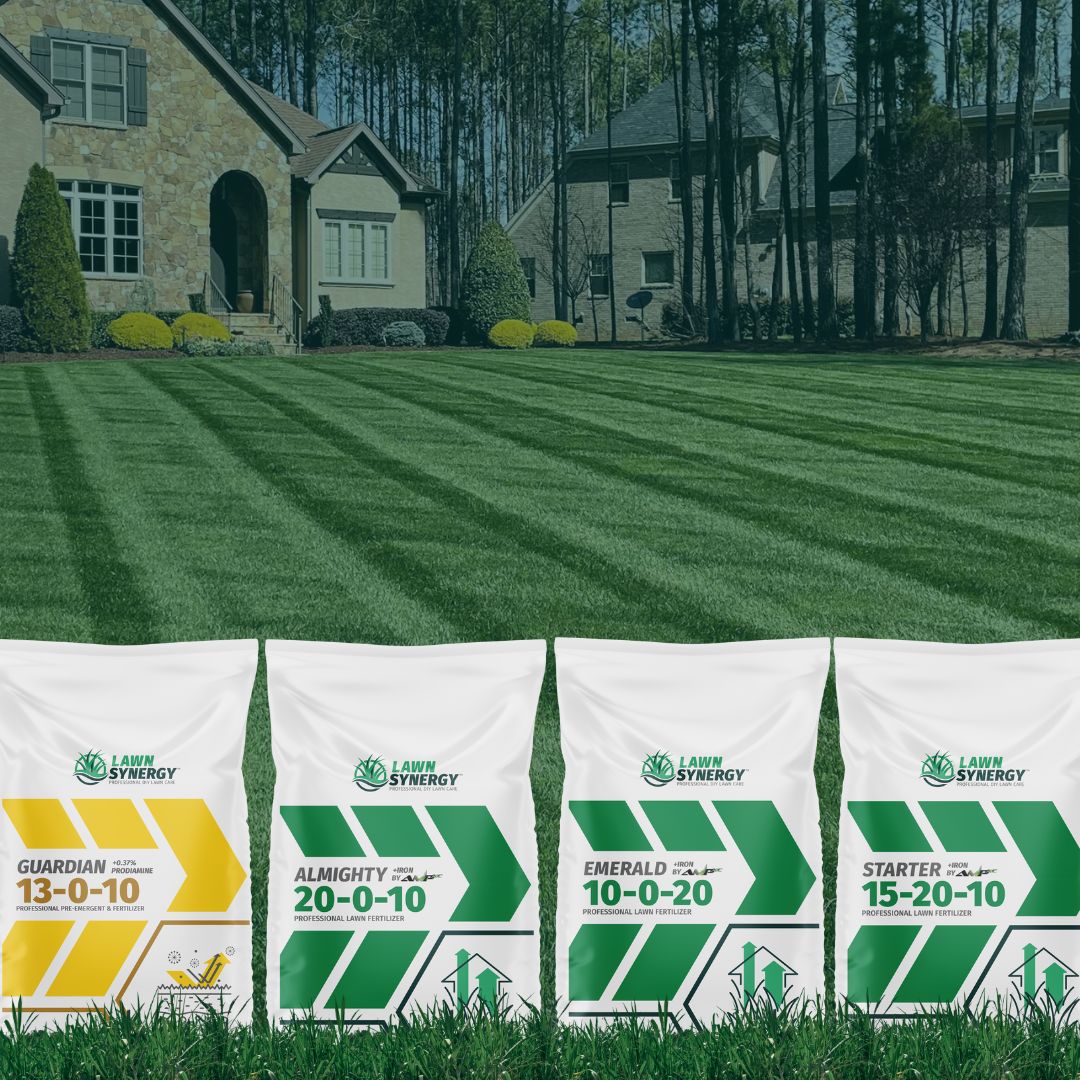20% OFF Soil Testing Kit
when you sign up for our emails >>>>

Transform your lawn into a lush paradise with our professional-grade DIY lawn...

Tall fescue lawns will have rolled stems and pointed blade tips. The grass will grow in bunches and the bunches will not be connected together under the soil. Also the lawn will have a dark green course appearance and will not go dormant during the winter months. Tall fescue lawns need to be aerated and overseeded in the fall to repair any damage from the summer months because it will not heal itself like warm season grasses do. Tall fescue lawns thrive when temperatures are 60-80 degrees.

Zoysia grass is very thick, almost where you can’t get your fingers into the soil. It will also go dormant in the transition zones. Look for pointed tips and rolled stems. Also, zoysia tends to have a lighter color green than both tall fescue and bermuda grass. Zoysia spreads by stolons and rhizomes. Zoysia grass will have fine hairs on the top of the leaf where bermuda grass will have fine hairs on both sides of the leaf. Zoysia leaf blades will grow off the stem at an 80 degree angle where Bermuda grass will grow off the stem at a 45 degree angle. Zoysia grass is more rigid where bermuda grass is more smooth to the touch.

Bermuda grass can be identified by its fine to coarse blades and folded stems. You can see fine hairs near the base of each leaf sheath. It will also be connected together above ground by stolons. It is a very aggressive warm season grass that loves the sun. In a transition zone, Bermuda grass will go during the winter months. Bermuda grass does not do well in shade. Bermuda grass is smooth to the touch compared to rigid touch of zoysia grass.

Centipede grass will be identified by its boat shaped leaves, finer texture, and is slow growing. Centipede grass will also have a lighter green color compared to bermuda or St. Augustine and also spreads by stolons. It does not hold up in heavy traffic areas and is slow to recover. However it is more shade tolerant than bermuda grass. Centipede will require .5 inches of water per week and is a very low maintenance lawn type. Best for low ph sandy soils.

St. Augustine grass can be identified by its coarse texture and flat blades. Its leaves are oppositely arranged on its stem. It will also have stolons or runners that travel above and below the ground connecting each other. Blades are also wider than bermuda and they are also folded. St. Augustine grass is found in southern states and grows much better in shade compared to Bermuda grass.


Many grasses such as Bermuda grass and Zoysia Grass produce runners which grow horizontally and root at each node. Once a node roots, if a runner breaks it will continue to grow as an individual plant and product it’s own runners. If the runners grow above the ground they are called stolons. If the runner grows beneath the ground it is called a rhizome.

when you sign up for our emails >>>>